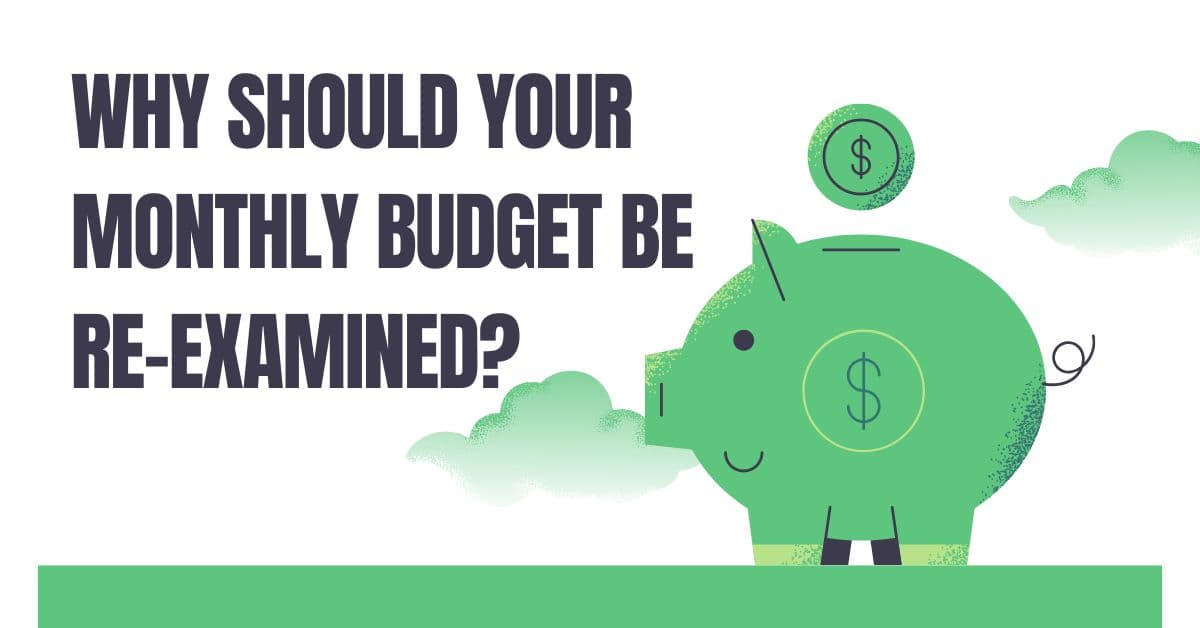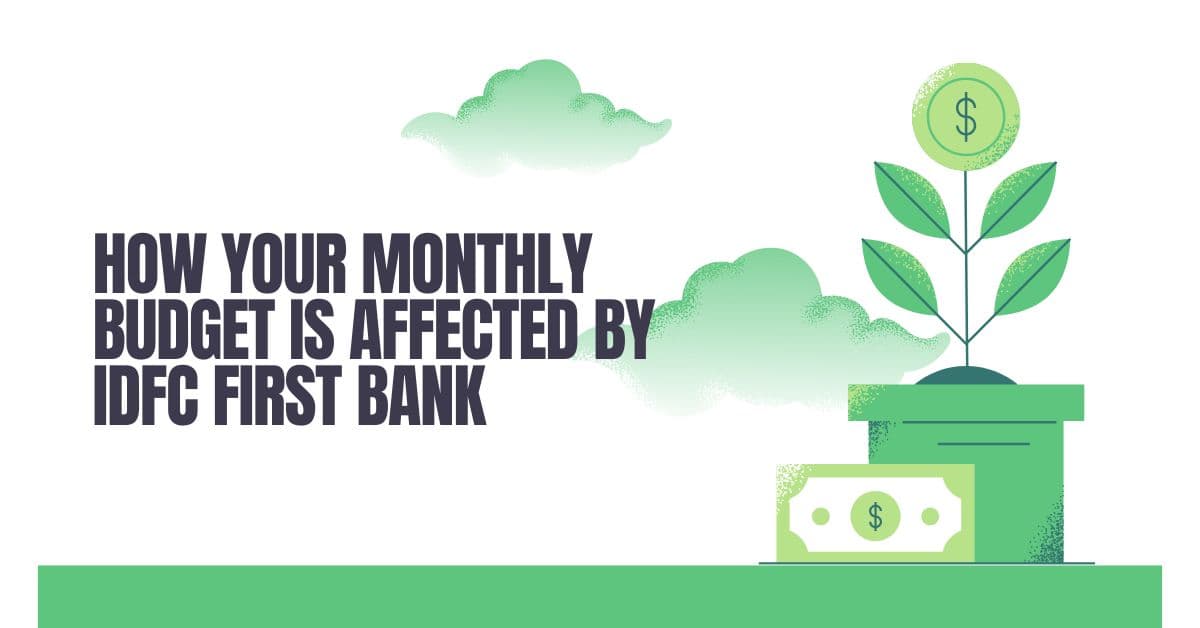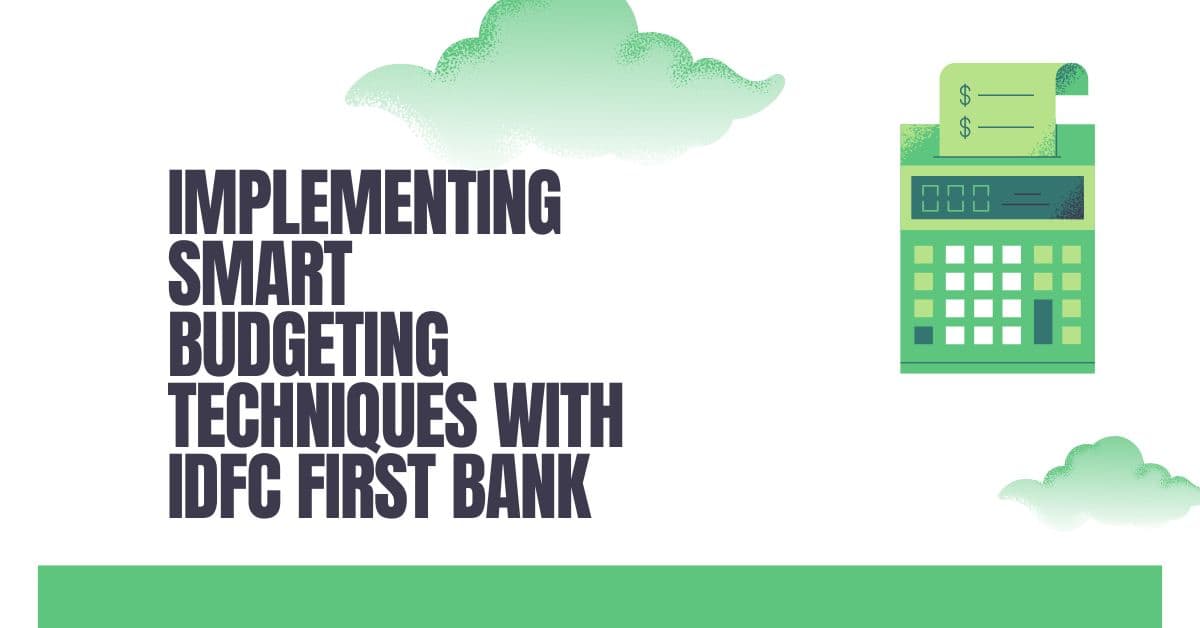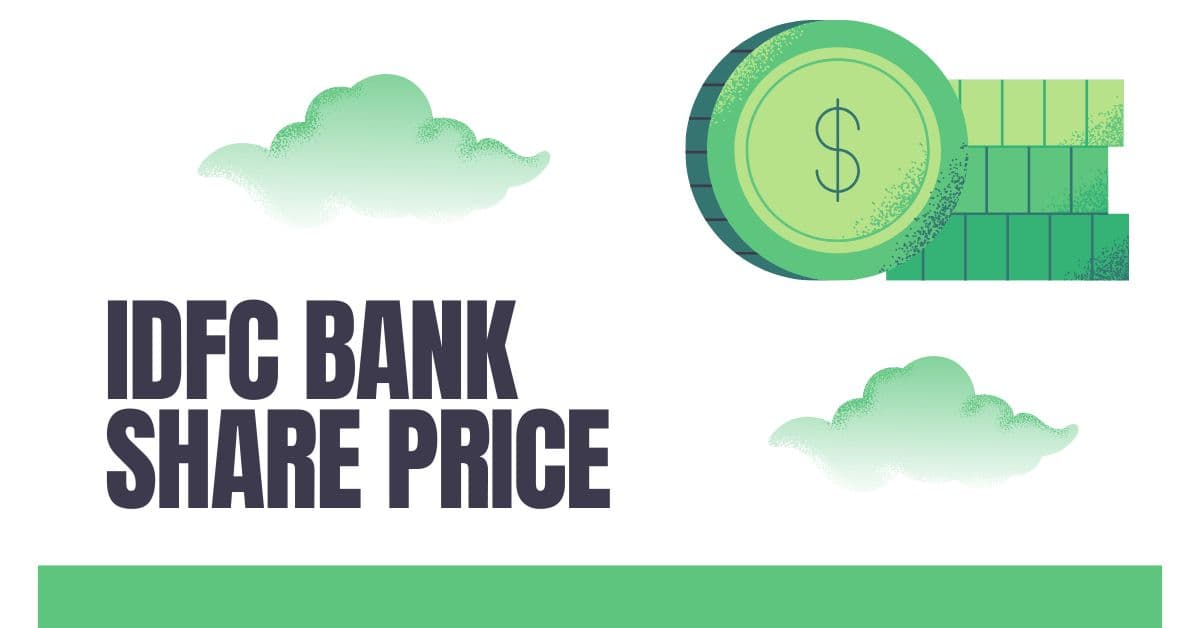IDFC Bank Share Price in Focus: On June 9, 2025, IDFC First Bank’s share price was ₹71.52 on the NSE, up 7.07% from the previous closing of ₹66.80. The company has a market capitalisation of ₹52,428.40 crore. The bank’s strong deposit growth (25.2% YoY to ₹2,42,543 crore) and steady asset quality (GNPA at 1.87%) indicate resilience notwithstanding a difficult Q4 FY25, when net profit dropped 58% YoY to ₹304 crore as a result of microfinance headwinds. Investors trying to maximise their monthly budgets are interested in IDFC First Bank’s shares because of the RBI’s 5.5% repo rate, which is boosting optimism in the banking industry. This article examines how the performance of IDFC First Bank may affect your financial planning and provides practical tax and investment advice to help you re-evaluate your spending in the fast-paced Indian market.
Market Snapshot of the Share Price of IDFC First Bank
Founded in 2018 as a result of the merger of IDFC Bank and Capital First, IDFC First Bank has become a technology-driven private bank that prioritises digital innovation and retail banking. The stock gained 9.11% in the last month and 103.68% in the last three years, indicating a positive trend, and reached an intraday high of ₹72.25 on June 9, 2025. Important market highlights consist of:
- Share Price: NSE, June 9, 2025, 10:29 AM IST Share Price: ₹71.52, up 7.07% from ₹66.80.
- Market Cap: There are 732.21 crore shares outstanding, and the market capitalisation is ₹52,428.40 crore.
- 52-Week Range: ₹84.50 (high) to ₹52.46 (low).
- Analyst Rating: Five strong buy, three buy, and three sell recommendations were given by analysts, with an average target price of ₹71.
- Fundamentals: Microfinance slippages caused the net profit to drop 58% to ₹304 crore in Q4 FY25, despite sales of ₹11,308.42 crore (up 14.66% YoY).
Why It Is Important: The bank is an appealing option for investors looking to finance tax-saving objectives or budget modifications due to its robust deposit growth, high CASA ratio (46.9%), and emphasis on digital banking.
Why Should Your Monthly Budget Be Re-examined?

The growth-oriented policies of the RBI and the stock performance of IDFC First Bank present chances to reallocate money from investment profits in order to maximise your monthly budget. Diversified portfolios, tax-saving investments, and reduced loan EMIs can all free up cash flow for wealth building or family necessities.
The Financial Performance of IDFC First Bank
The solid foundation of IDFC First Bank supports its investment potential even in the face of earnings challenges:
Financial Snapshot of the Company (FY21–FY25):
Strong business momentum was seen in the revenue, which increased from ₹15,968 crore in FY21 to ₹36,501 crore in FY25. Prior to declining to ₹1,490 crore in FY25, net profit peaked at ₹2,942 crore in FY24. Similar trends were seen in earnings per share (EPS), which increased from ₹0.88 in FY21 to ₹4.30 in FY24 before levelling out at ₹2.04 in FY25. While return on equity (ROE) peaked in FY23 at about 9.6% before falling to 3.9% in FY25, book value per share increased gradually from ₹31.54 to ₹52.11. With a steady growth from 4.52% to 5.61%, the net interest margin (NIM) demonstrated enhanced core profitability.
Key Takeaways: Microfinance provisions (₹5,515 crore) caused net profit to drop 49.35% to ₹1,490 crore in FY25, despite revenue growing 20.37% YoY to ₹36,501 crore. A solid deposit franchise was demonstrated by the 25.2% increase in deposits to ₹2,42,543 crore and the steady 46.9% CASA ratio.
Drivers of IDFC First Bank’s Growth
IDFC First Bank is positioned as a stock to watch for a number of reasons:
- Digital Innovation: The client experience is improved by more than 250 digital services, such as goal-based investment and fee-free banking.
- Retail Focus: Microfinance decreased to 4% of the loan book, while retail, rural, and MSME loans increased 18.6% year over year to ₹1,97,568 crore.
- Capital Raise: To support expansion goals, 7,500 crore was raised through preferred shares to Warburg Pincus and ADIA.
- Asset Quality: With a provision coverage ratio of 72.3%, GNPA increased from 1.88% to 1.87%.
- RBI Policy Support: The 3% CRR drop and 5.5% repo rate increase liquidity, which promotes credit expansion.
Hack: Using Groww or Zerodha, invest in IDFC First Bank to take advantage of its expansion in digital banking while keeping an eye on microfinance dangers.
How Your Monthly Budget Is Affected by IDFC First Bank
Opportunities to reconsider your budget are presented by the bank’s performance and market trends:

- Reduced Loan EMIs: Borrowing expenses are decreased by the repo rate drop to 5.5%. A ₹20 lakh house loan from IDFC First Bank at 8% for 15 years, for instance, has an EMI of ₹19,101 instead of ₹20,553 at 9%, saving ₹1,452 every month.
- Gains on Investments: A 9.11% increase in the stock price over the previous month might be used to pay for household costs or investments that save taxes.
- High Savings Rates: The savings accounts offered by IDFC First Bank provide interest rates of up to 7%, which increases monthly returns for budgeting.
- Dividend Income: To cover minor costs, a 0.37% yield (a dividend of ₹0.25 per share) can be added to income.
Hack: To improve your monthly cash flow, transfer stock profits or EMI savings to high-yield savings accounts or tax-saving options.
Using IDFC First Bank Stock Gains for Tax Planning
Under the previous tax system, you can maximise your budget by using stock profits for tax planning:
1. Tax on Capital Gains
The holding period determines how profits from IDFC First Bank shares are taxed:
- Short-Term Capital Gains (STCG): Section 111A taxes gains from shares sold within a year at a rate of 15%. For instance, a ₹1,500 tax is due on a ₹10,000 gain from the sale of 150 shares (purchased at ₹60 and sold for ₹71.52).
- Long-Term Capital Gains (LTCG): Section 112A levies a 12.5% tax on gains exceeding ₹1.25 lakh per year on shares held for more than a year. If the total LTCG is less than ₹1.25 lakh, a ₹20,000 gain kept over a 12-month period is tax-free.
Hack: Leverage the ₹1.25 lakh LTCG exemption by holding shares for more than a year. Use the profits to make tax-saving investments or budget changes.
2. Taxation of Dividends
Dividends of ₹0.25 per share are taxed at your slab rate, with 10% TDS applied if the payout exceeds ₹5,000 per year.
Hack: To lower taxable income and pay for monthly costs, reinvest profits into PPF or ELSS.
3. Share transfers are subject to a 0.1% Securities Transaction Tax (STT)
The STT for purchasing 100 shares at ₹71.52 is ₹7.15.
Hack: To ensure proper ITR reporting by July 31, 2025, track STT using demat accounts on websites such as INDmoney.
4. Strategies for Saving Taxes
- Losses Offset: Reduce your tax obligation by offsetting IDFC First Bank earnings with capital losses from other assets.
- Section 80C: Reduce your taxable income by investing up to ₹1.5 lakh in ELSS, PPF, or NSC, which will free up money for budgeting.
- Harvesting taxes: To take advantage of the LTCG exemption, sell shares with profits up to ₹1.25 lakh per year, then reinvest.
- Old Tax Regime: Choose the Old Tax Regime to increase your discretionary income for investments or expenses if your deductions total more than ₹2.5 lakh.
Hack: To compare regimes and allocate money to IDFC First Bank shares or tax-saving instruments, use internet tax calculators.
Implementing Smart Budgeting Techniques with IDFC First Bank
Rethink your monthly budget by using IDFC First Bank’s performance as leverage:

- Invest in IDFC First Bank: Use SIPs on sites like Upstox to allocate 5–10% of your portfolio to IDFC First Bank shares, with a goal of 15–20% returns by 2026.
- Refinance Loans: Refinance personal or home loans with IDFC First Bank at reduced rates to save ₹500 to ₹1,500 on EMIs each month.
- High-Yield Savings: To increase monthly income, put extra money into IDFC First Bank’s 7% savings accounts.
- Fund Tax-Saving Investments: To save money and save taxes, use stock profits to invest in PPF or ELSS.
- File ITR on Time: To avoid penalties under Section 234F, report dividends and profits by July 31, 2025.
Hack: To profit from the expansion of the banking industry while setting aside money for taxes and expenditures, start a ₹2,000–₹5,000 monthly SIP in IDFC First Bank or Bank Nifty ETFs.
Targets for the Share Price of IDFC First Bank (2025–2030)
- 2025 (₹80–₹98): As banks innovate to draw savers with new products and tech-driven services, growth will be supported by the rise of digital banking and strong deposit growth.
- 2026 (₹105–₹118): Securitisation initiatives and better loan-to-deposit ratios are likely to promote a further increase through the expansion of retail loans.
- 2027 (₹125–₹155): As banks concentrate on profitability and lowering non-performing assets, stronger ROE and improved asset quality will push values higher.
- 2030 (₹215–₹250): Long-term goals show the power of digital innovation and expanding market share, supported by blockchain, artificial intelligence, and more extensive fintech integration.
Source: Sharemarketfly and the Youth Council of India’s analyst estimations.
Considerations for Risks
- Microfinance Obstacles: Profitability may be impacted by high slippages (₹572 crore in Q4 FY25).
- Market Volatility: Stock prices may be impacted by rate increases or worldwide uncertainty.
- Poor ROE: A FY25 ROE of 3.90%, down from 9.11 percent, indicates difficulties in the near future.
- Equity Dilution: The recent 7,500 crore fundraising might result in a 17% dilution of EPS.
Hack: To shield assets from abrupt market declines, use stop-loss orders on websites like Dhan.
Frequently Asked Questions (FAQ)
What is the current share price of IDFC First Bank?
The share price is up 7.07% from the previous close, at ₹71.52 on the NSE as of June 9, 2025.
What impact does IDFC First Bank’s performance have on my spending plan?
While reduced EMIs from less expensive loans free up monthly cash flow, stock profits can be used to finance tax-saving investments or expenses.
How do stock gains at IDFC First Bank get taxed?
If kept for less than 12 months, STCG is taxed at 15%, while if held for more than 12 months and above ₹1.25 lakh, LTCG is taxed at 12.5%.
What factors contribute to IDFC First Bank’s growth?
Its potential is driven by retail loan growth, digital banking, and a high CASA ratio (46.9%).
What is the FY 2024–2025 ITR filing deadline?
Individuals must do so by July 31, 2025, and those who need an audit must do so by October 31, 2025.
Conclusion
At ₹71.52 on June 9, 2025, IDFC First Bank’s share price shows that it is resilient in the face of adversity, with optimism fuelled by robust deposit growth and digital innovation. To finance tax-saving investments like PPF or ELSS, you can re-evaluate your monthly budget by using stock profits, high-yield savings, and reduced loan EMIs. To remain in compliance, begin investing through websites like as ICICI Direct or BlinkX, keep an eye on microfinance hazards, and submit your ITR by July 31, 2025. Take advantage of this chance to improve your financial situation and accumulate cash in India’s thriving banking industry!
Disclaimer: This article is intended for informative purposes only and does not represent financial or tax advice. Before making financial decisions, get advice from a qualified tax expert or financial planner.
Yes Bank Share Price: A Key Factor in Your Budgeting Strategy
Tesla Share Price in India Up Again: Time to Rethink Your Monthly Budget!
BSE Bonus Shares: Budget Your Portfolio Before It’s Too Late!

